What is the difference between a gaming keyboard and a customized keyboard - ROG Ranger NX Wireless Keyboard
Hi, hello, here we come.
Let’s take a look at a new product recently launched by ROG: Ranger NX wireless keyboard.
This keyboard is equipped with ROG's self-developed NX axis, which is ROG's second self-developed axis after the RX optical axis.
Today's article mainly explores two parts.
1. Is the NX axis developed by ROG still as good as the RX optical axis?
2. What are the differences between gaming keyboards and customized keyboards in terms of design and functional focus?
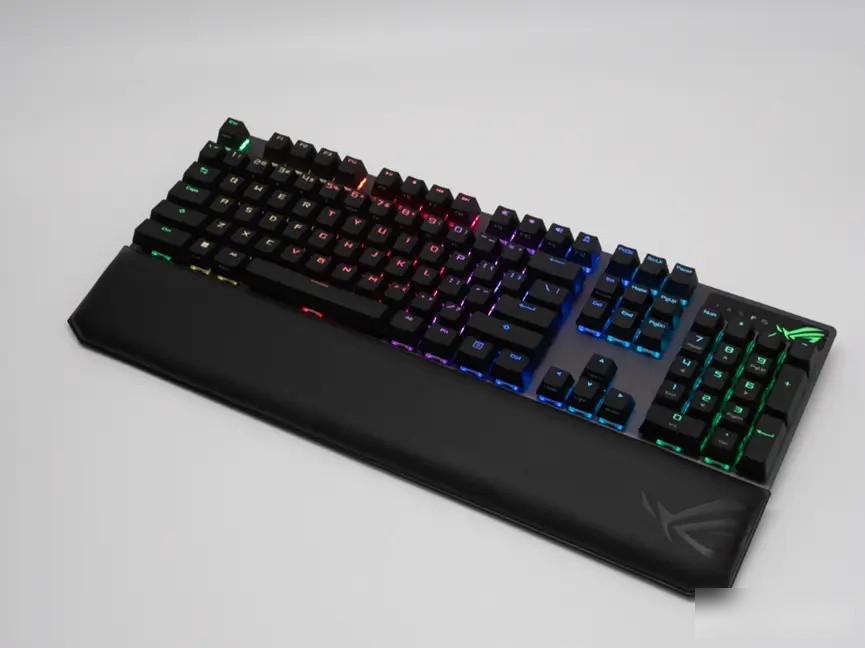
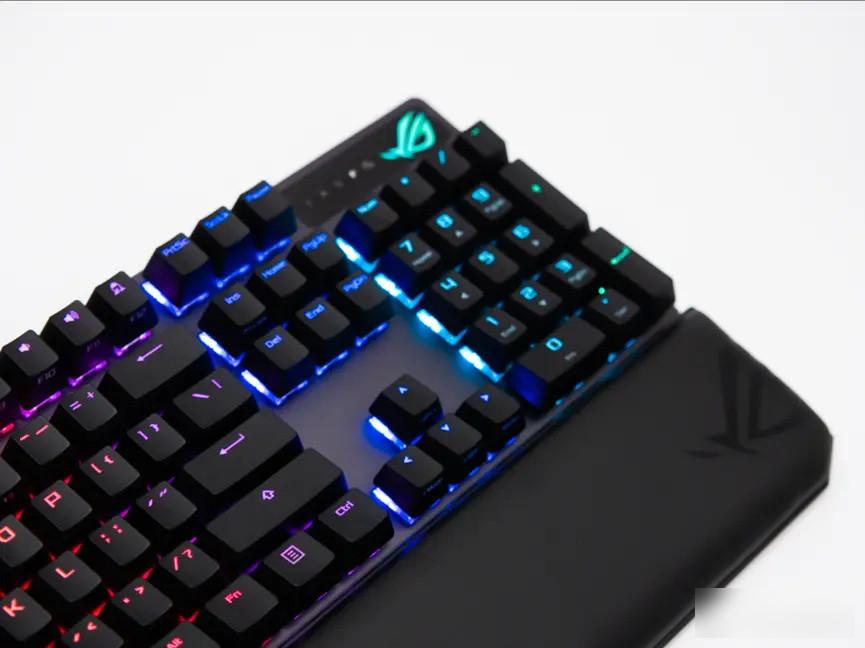
The appearance of the Ranger NX is still the appearance of a gaming keyboard from a big manufacturer, which is unremarkable. .
Black plastic bottom shell and dark gray aluminum anodized metal cover, with fully transparent switch body and ABS keycap, the lighting effect is very good even in the daytime.

The surface of the magnetic palm rest below is PU leather, and the interior is filled with sponge. It comes with a certain ergonomic inclination, which is soft and can provide a certain support when typing so that the hands are not so sour.
A mechanical keyboard with a palm rest or without a palm rest is completely different. If you haven’t bought a palm rest, remember to buy it this Double Eleven.
Just buy this kind of soft leather, which is comfortable and cheap to put your hands on, and you don’t feel bad if one of them breaks for more than ten yuan.

The keycap of this one in my hand is made of ABS material, which may be a slot.
But if you know about ROG keyboards, you will know that ROG keyboards have always been divided into two versions: ABS and PBT.
The lighting effect of ABS is better, and the ability of PBT to resist finger oil is better.
Buy ABS if you like lighting effects, and buy PBT if you are afraid of oily keycaps. Give users the right to choose, I think ROG is doing a good job.
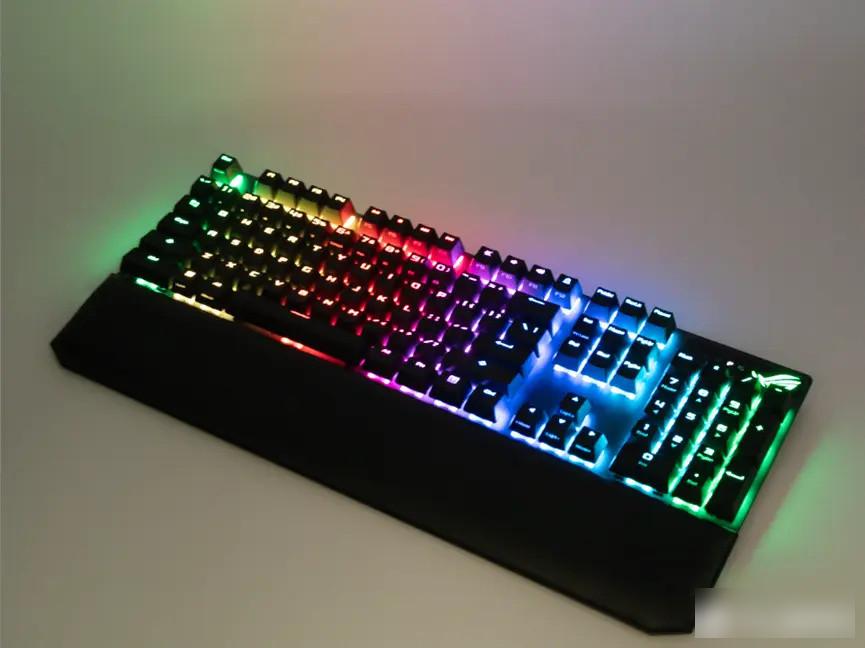
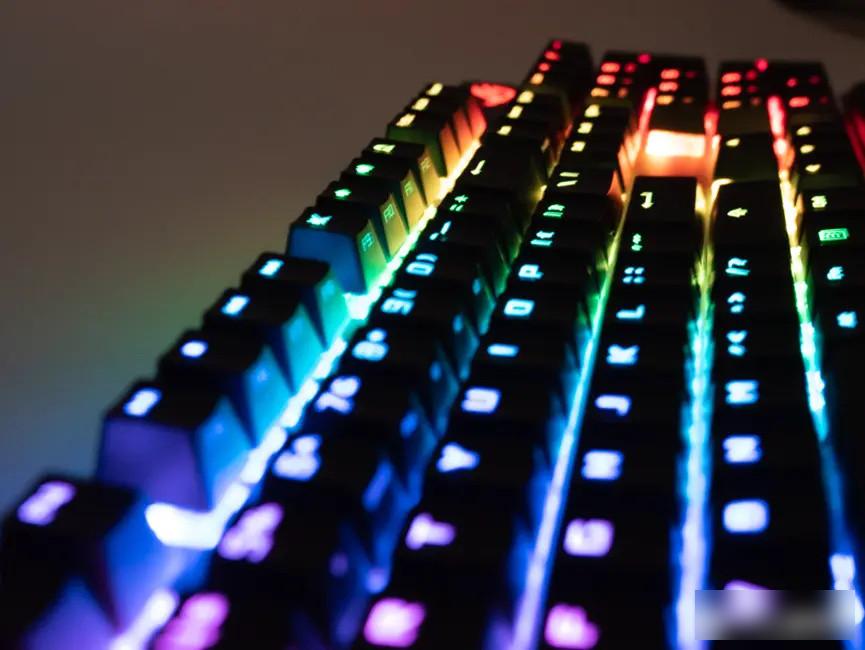
Put two pictures of the lighting effect of the keyboard, ROG old lamp factory.
Even on the H610M motherboard, ASUS provides RGB interface, ASUS is obsessed with lights.
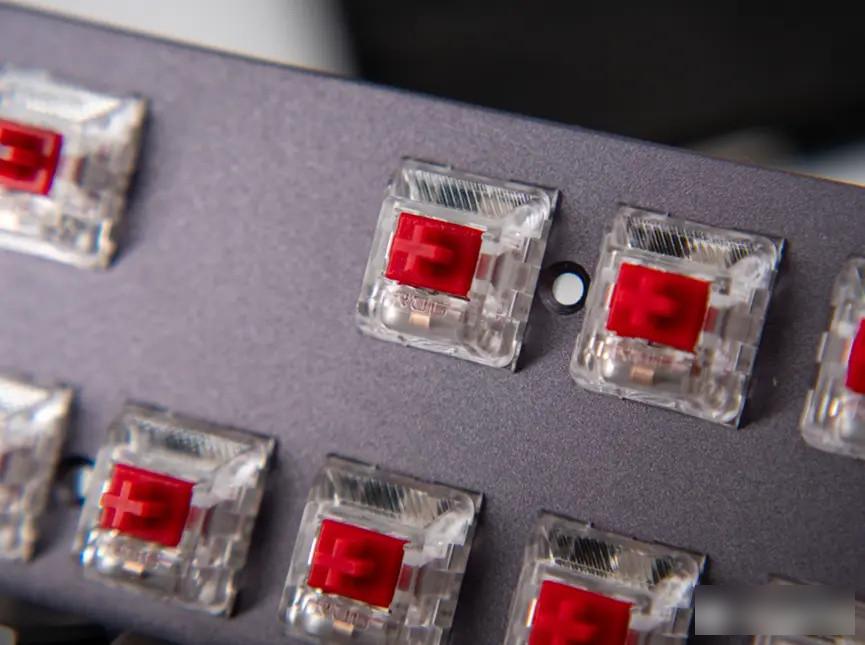
ROG launched a total of three colors for the NX axis this time.
They are: NX Hawthorn Red, NX Mocha Brown, NX Glacier Blue. Each corresponds to the classic red axis, tea axis, and green axis.
The shaft uses Kaihua's solution and does not support hot swapping. Designed with a fully transparent shell and printed with the ROG Logo, the light area is made with oblique cut lines to soften the keyboard light and prevent glare from the light.
The one I got is the NX Hawthorn red switch body. You can tell from the appearance of the cross axis that this time the NX axis is aligned with the Cherry MX axis.
The tapping feel is also very similar to Cherry Red switches, but the second half of NX Hawthorn Red will be heavier and smoother than Cherry Red switches.
However, in terms of smoothness, NX Hawthorn Red is still a bit inferior to the current domestic high-end linear switches, and even incomparable to ROG’s own RX switches.
After all, this is the first time that ROG has made a traditional mechanical axis, and this performance is also understandable.
In terms of feel, give it a passing grade. After all, the goal is Cherry, and the feel is stronger than Cherry.
If you want to pursue the ultimate smoothness, it is recommended to add money to the RX shaft. The shaft structure of the RX is a completely non-contact design. It is difficult to surpass the smoothness of traditional mechanical shafts.

However, in terms of sound, the performance of this ROG NX axis body is not satisfactory.
Not only is the percussion sound not HIFI at all, but there will also be some weak spring sounds on the shaft during continuous percussion.
As you can see, this keyboard does not have any sound-absorbing structure between the upper cover and the PCB, so there will be some cavity sound when the big keys are struck.
In short, if you care about the sound performance of the keyboard, then all the current ROG keyboards are not suitable for you.
Not only ROG, but the sound performance of keyboards from major peripheral manufacturers such as Razer, Logitech, Corsair, Cherry, and SteelSeries is also inferior to the current domestic keyboards.
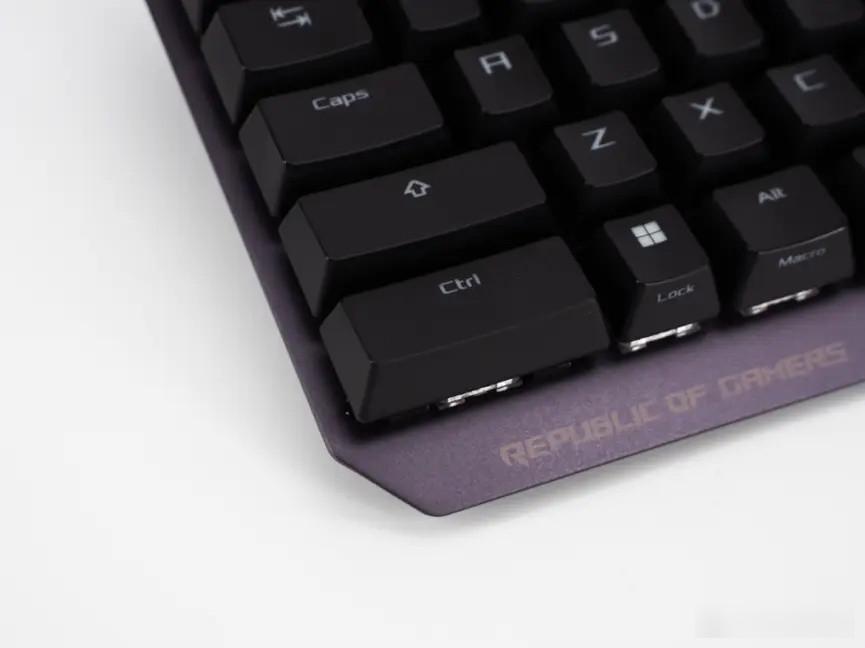
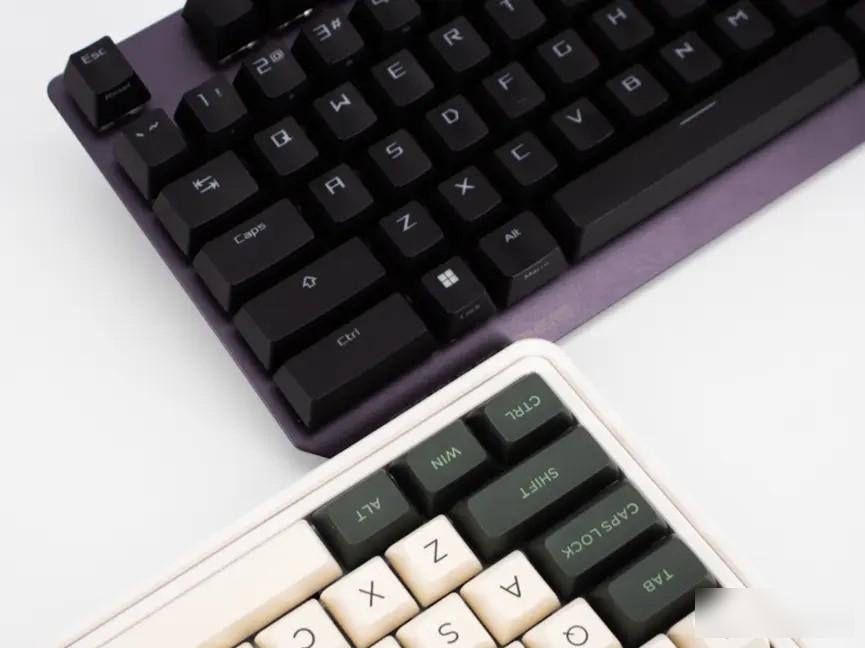
Many games like to set squat as the Ctrl key, but I think the Ctrl key on the keyboard is too small to press. They all change the squat in the game to the C key. I don’t know how many people like me have changed it like this .
ROG changed the small Ctrl into a large Ctrl, Ctrl Plus this time.
Not only has it been enlarged and widened, but the axis body has also been changed to a satellite axis design, which actually turns Ctrl into a big key.
Gaming keyboards should be designed to be optimized for games. Unfortunately, I am used to squatting on the C key, so I can't use this function.
But if you are still squatting with Ctrl, then you must like this big Ctrl, it is very cool to press.

Finally, let's look at the disassembly.
I still don't recommend you to disassemble the keyboard by yourself, because there is a screw under the sticker, and you need to tear off the sticker to disassemble it.
There is a small piece of sound-absorbing cotton on the bottom of the keyboard, which makes the cavity sound of this keyboard smaller than other ROG keyboards, but there is still a little bit when hitting large keys.
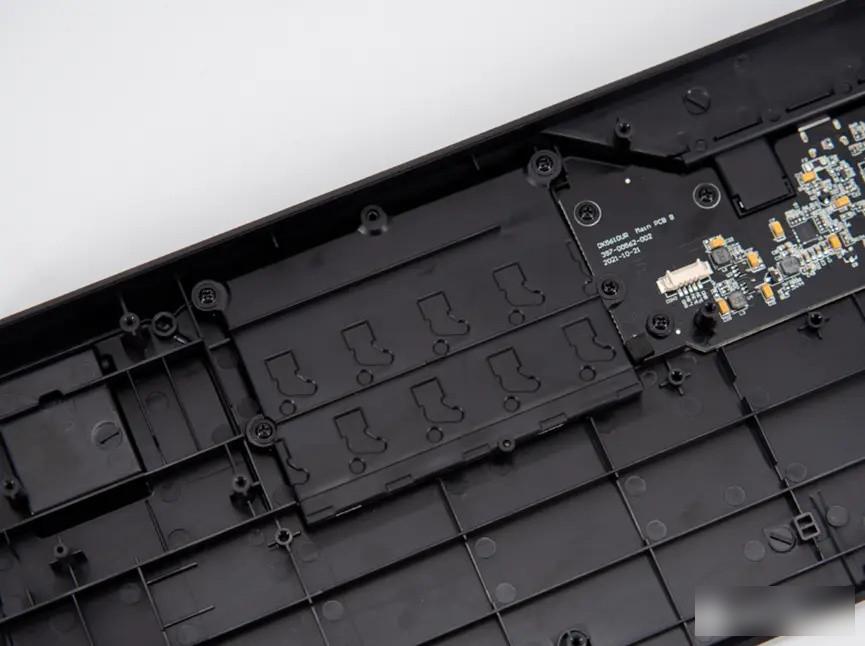
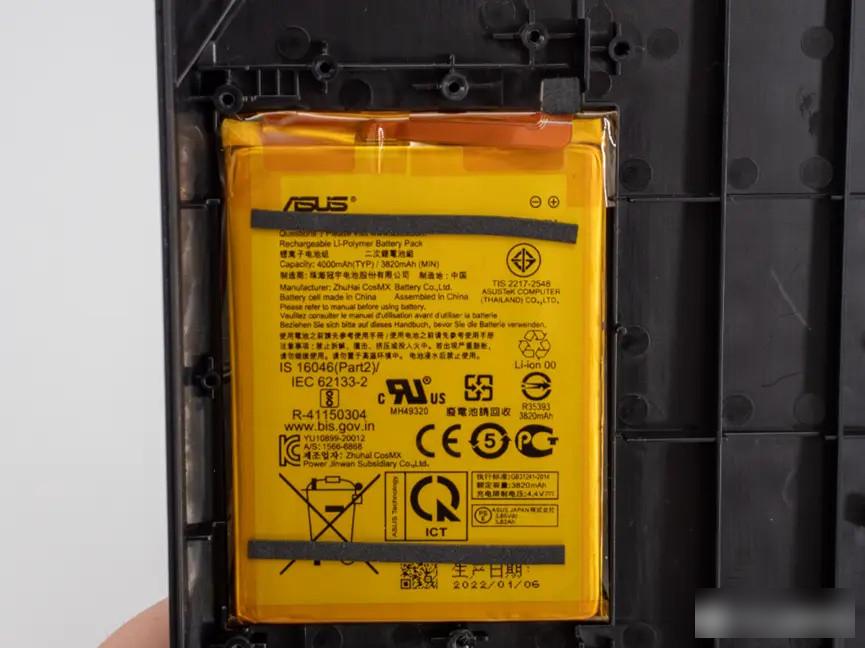
Inside the shield under the sound-absorbing cotton is the battery, the supplier is from Zhuhai Guanyu, with a capacity of 4000mah.
I suspect that this battery is a stock of a mobile phone battery, and the battery connectors are BTB connections commonly used by mobile phone batteries.
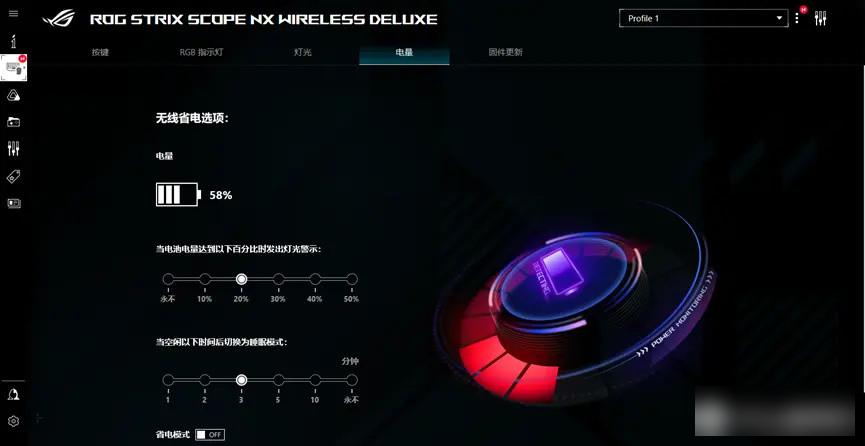
The actual measurement turned off the battery power saving mode, turned on the light, and used a 2.4G connection. After 5 consecutive days of high-intensity use, there was still 58% of the battery left.
Official endurance data:
Bluetooth mode to turn off the light: 316 hours
Turn on the light in Bluetooth mode: 78 hours
2.4G mode off lights: 315 hours
Turn on the light in 2.4G mode: 60 hours
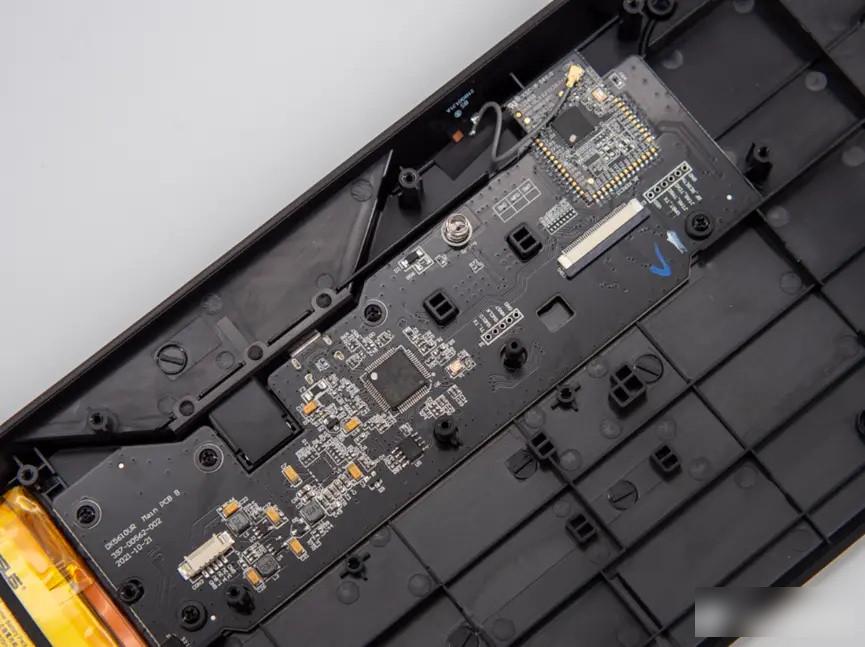
Then look at the motherboard, ROG did not integrate the main control and wireless chips on the keyboard PCB like domestic keyboard manufacturers, but opened a small board separately, and there is a small spring on the small board as a buffer.
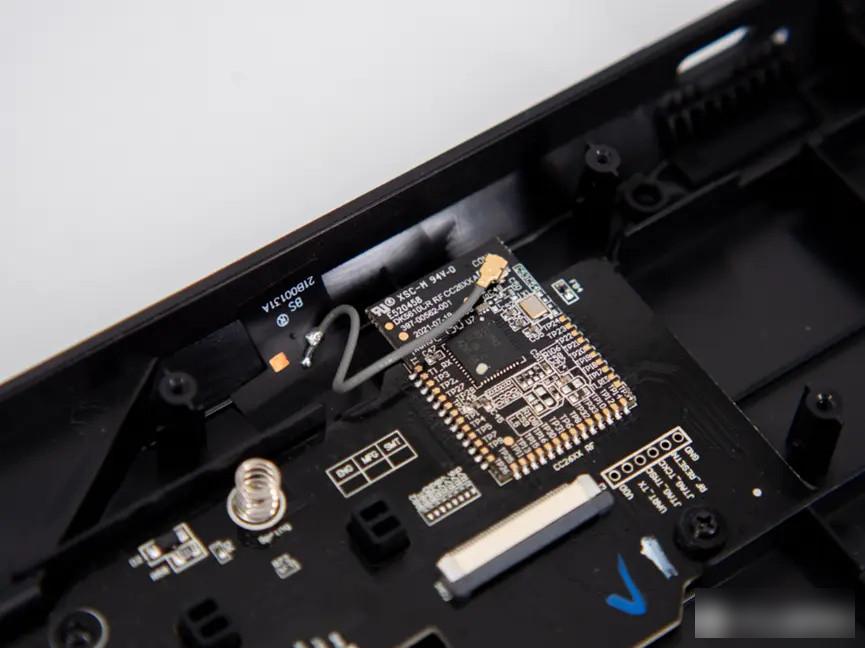
Around the wireless chip on the right side of the motherboard, there is a separate coaxial signal cable connected to the keyboard shell, which transmits the wireless signal to the shell antenna.
Such a separate antenna design can greatly increase the signal strength and transmission stability of the keyboard in wireless mode.
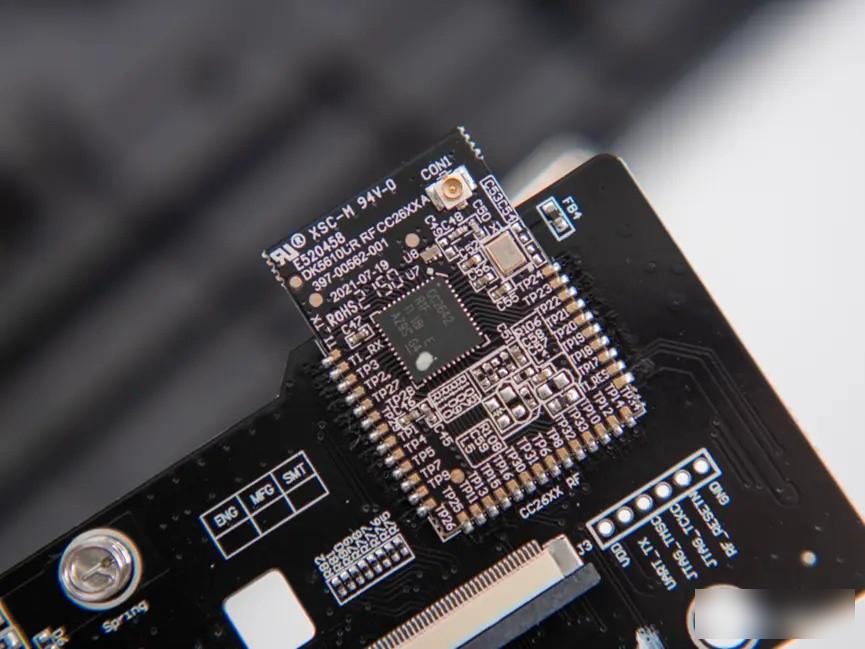
The wireless chip adopts Texas Instruments CC2642, which is a wireless chip designed for automobiles, but ASUS uses it on the keyboard.
48MHz Arm M4F processor, 352KB RAM, 256KB ROM, support low-power Bluetooth 5.2 and 2.4G wireless connection.
Although this time the Ranger NX is not equipped with ASUS's latest SpeedNova ultra-low latency wireless protocol. But the performance of this chip and the independent external antenna design make the wireless experience of this keyboard very good.
Surrounded by 7 2.4G frequency band devices on my desktop, I haven't seen any word loss in the past few days, and I don't notice any obvious delay.

In the center of the small board PCB is an ultra-low-power MCU from STMicroelectronics, which is guessed to be the keyboard master.
80MHz Arm M4 processor, 40KB RAM, 80KB ROM.
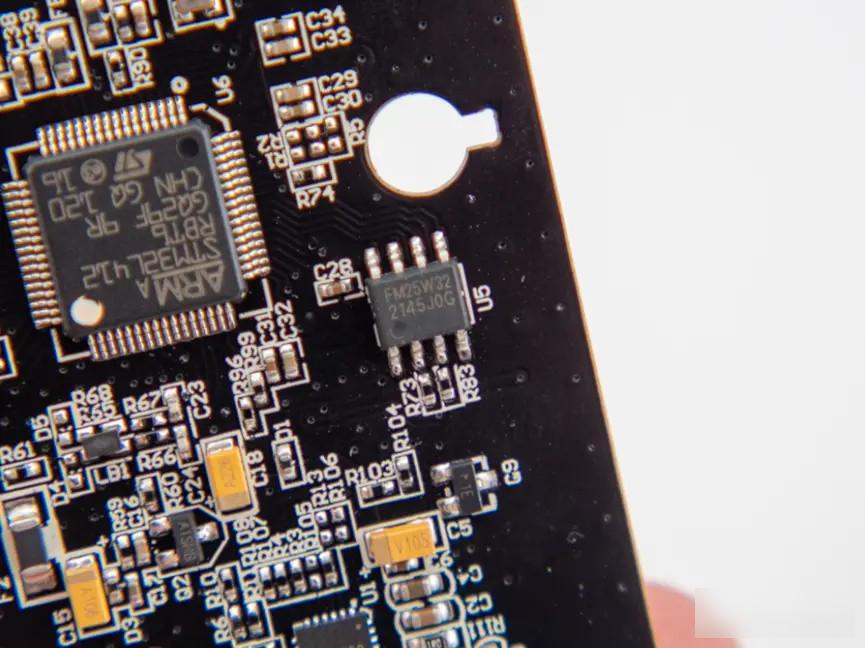
The storage IC next to the MCU comes from Shanghai Fudan Microelectronics.
The capacity is 32Mb, which is responsible for storing the settings of the keyboard's onboard lighting and shortcut keys.
At first I saw the silk screen on the IC and thought it was 32KB, but after checking the parameters, I didn't expect it to be 32Mb. This is the first time I have seen this kind of large-capacity storage IC on peripheral products.
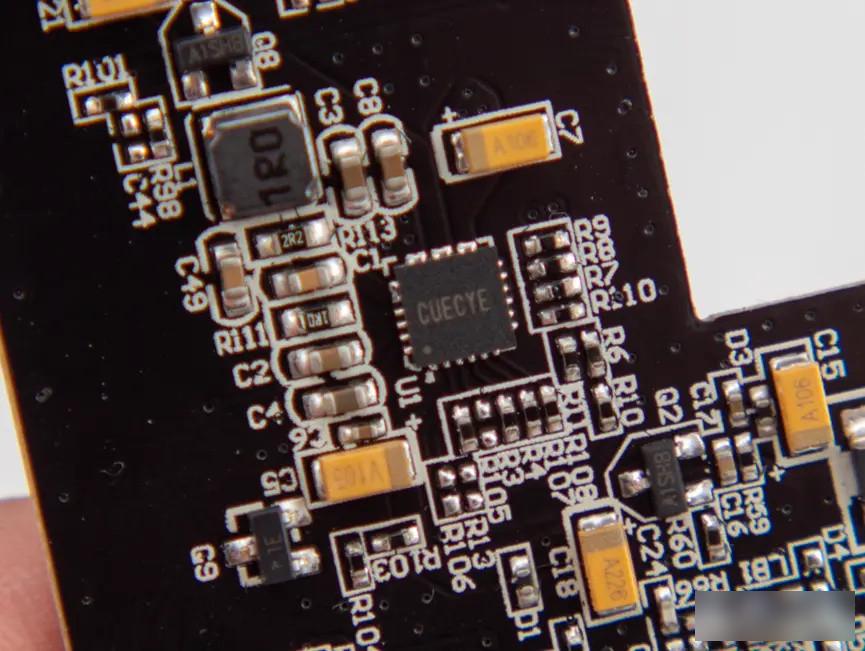
There is also an IC with the silkscreen of CUECYE on the small board. I can’t find any relevant information. I guess it is a power management chip. If you know it, you can add it in the comment area.

Read the complete disassembly of the keyboard, even if I don’t tell you, you can find the difference in design and function between the gaming keyboard and the customized keyboard.
The pursuit of customized keyboards is the feel and sound of the keyboard, so you can see that the current domestic customized keyboards are all adjusting, moistening the axis, and eliminating noise. To achieve a better feel, more pleasant percussion sound.
The gaming keyboard is designed with the keyboard as a gaming peripheral, in addition to the basic feel to ensure that every tap during the game can be triggered stably and accurately, and it can also respond smoothly and quickly when connected wirelessly.

As for how to choose, I think you should already know the answer.
If you are looking for feel and sound, choose a domestic customized keyboard.
Now the market where everyone is crazily rolling is your paradise. The sound-absorbing structure of a keyboard that used to cost thousands of dollars can now be bought for only a few hundred dollars.
If you want to use the keyboard as a gaming peripheral, you want a more stable wireless experience, longer wireless battery life, better driver support, and richer lighting gameplay. If you want these features, you have to choose a wireless gaming keyboard.
The author declares that there is interest in this article, please respect the author and the content shared, communicate friendly, and make rational decisions~
Factory Adress: No.11,FengpingRoad
